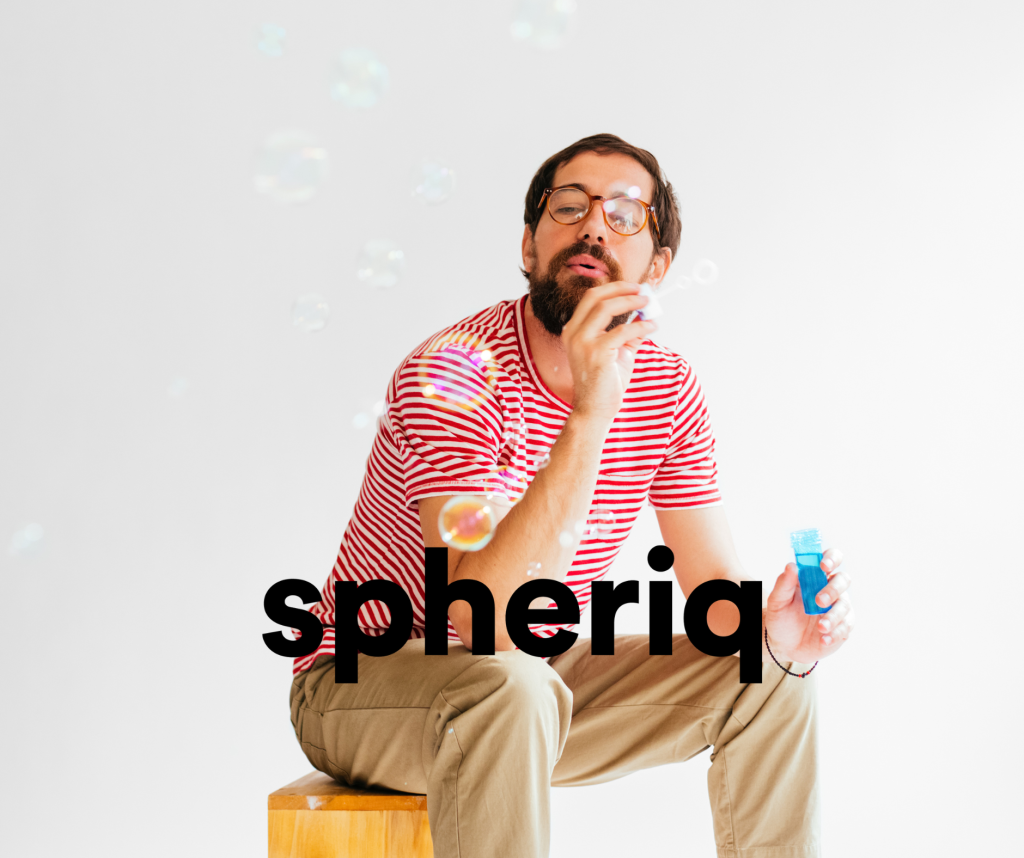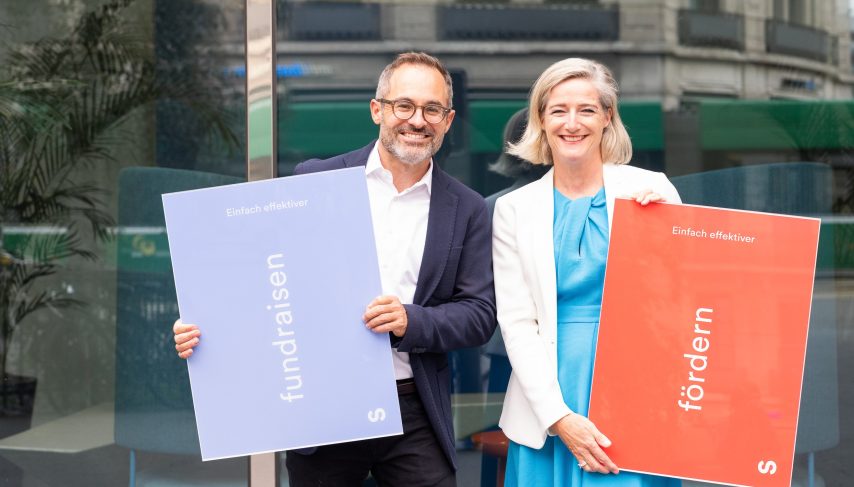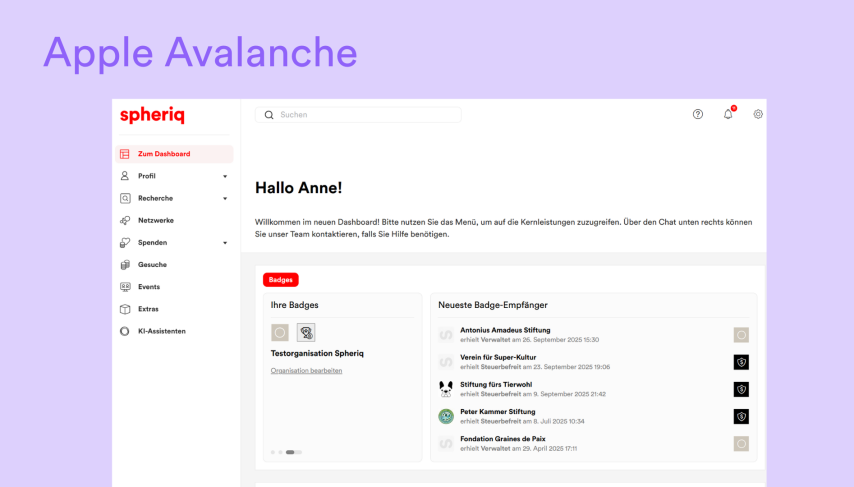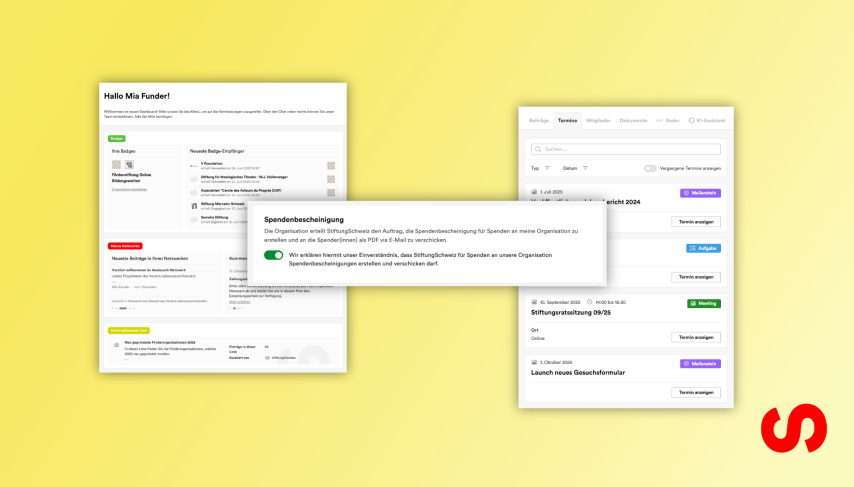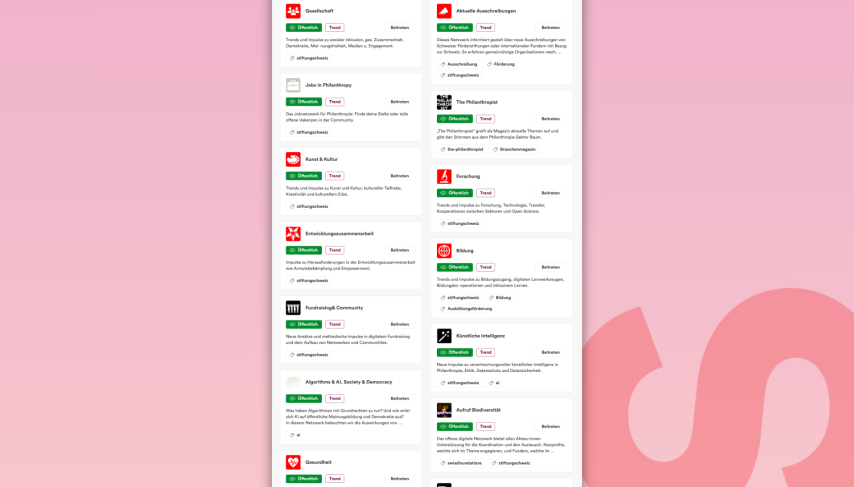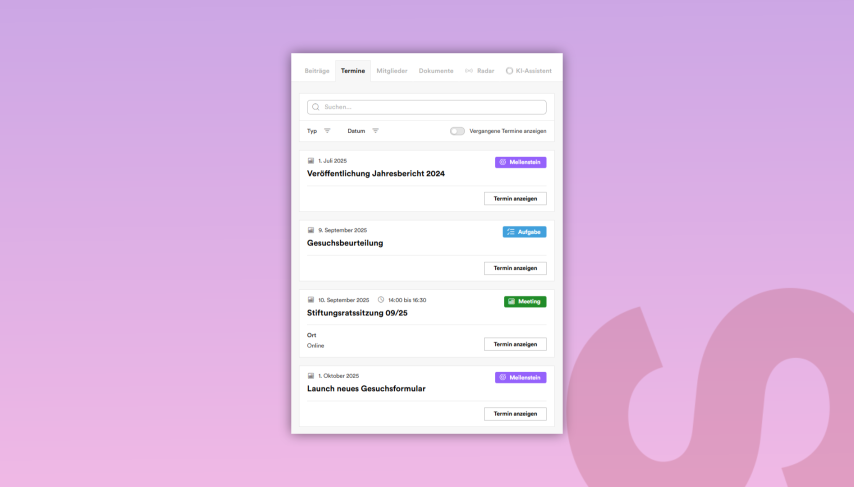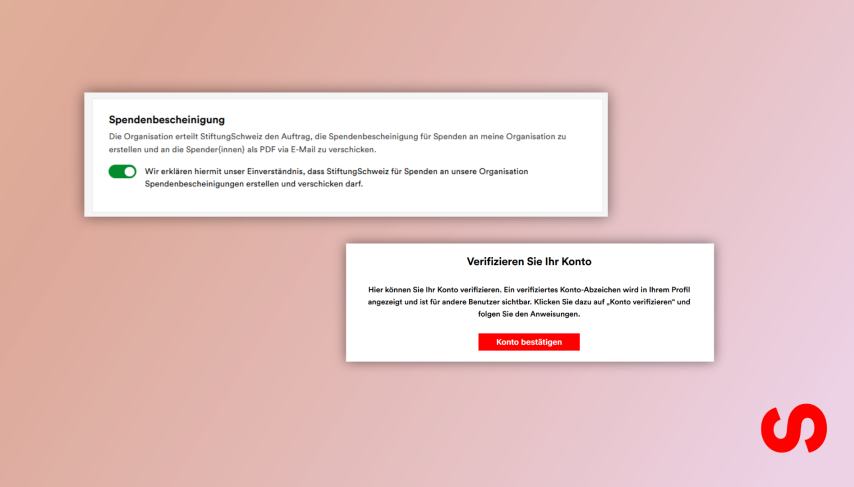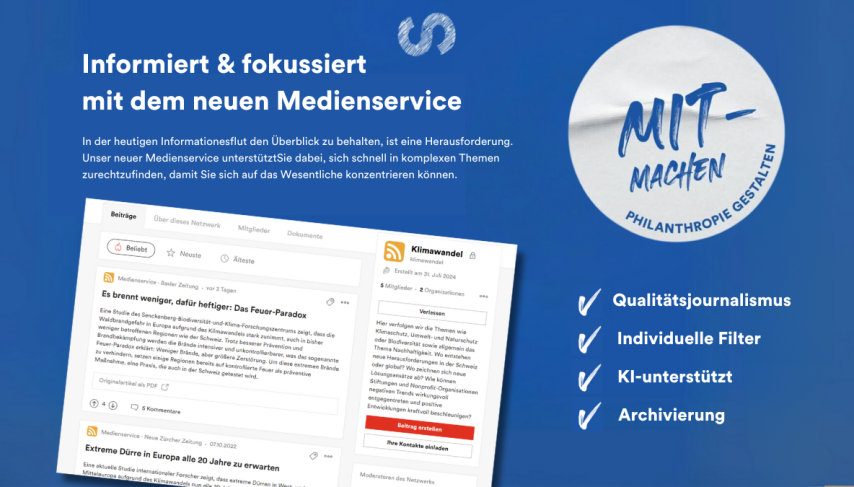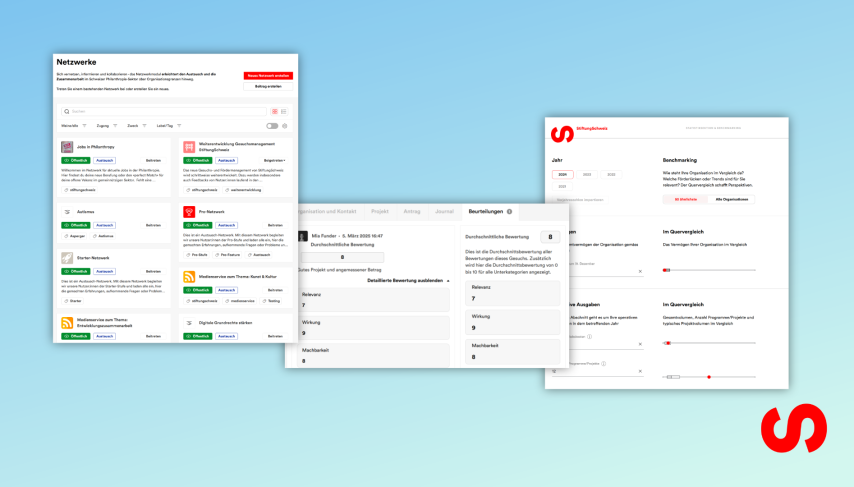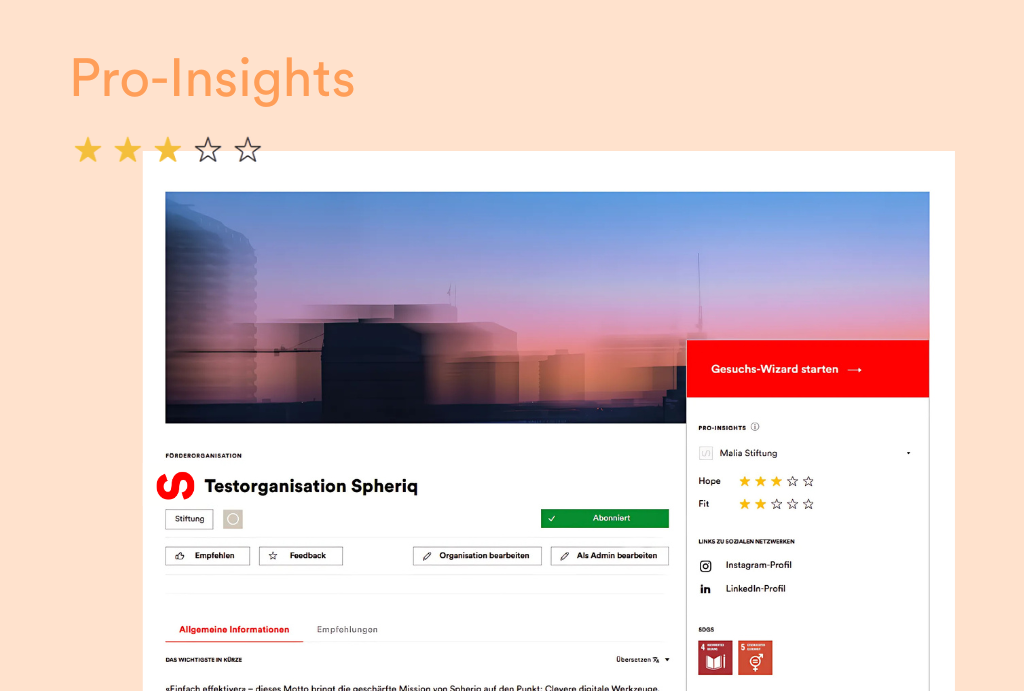
With the introduction of Fit & Hope, matching between nonprofits and funding foundations has never been easier. Two new indicators in the actor directory show at a glance where there are thematic, geographical and organizational matches – and how realistic a successful partnership is. In this blog article, you will find out what the new function is used for, what the requirements are for precise use and how the assessments are made.
Finding the right partner organization or funding foundation is a challenge for many nonprofits. The same applies vice versa: Funding organizations look specifically for projects that fit their funding purpose, but have to check a lot of information in the process.
This is precisely where the new Fit & Hope function, which is part of the new Pro-Insights, comes in. The relaunch as Spheriq takes matching to a new level. In addition to the existing profile information, two additional details now provide quick orientation:
– Fit shows with 0-5 stars how well organizations and projects fit a foundation thematically, geographically and according to target groups.
– Hope supplements this assessment with empirical values: feedback, recommendations and the organization’s activity provide information on how realistic a successful partnership actually is.
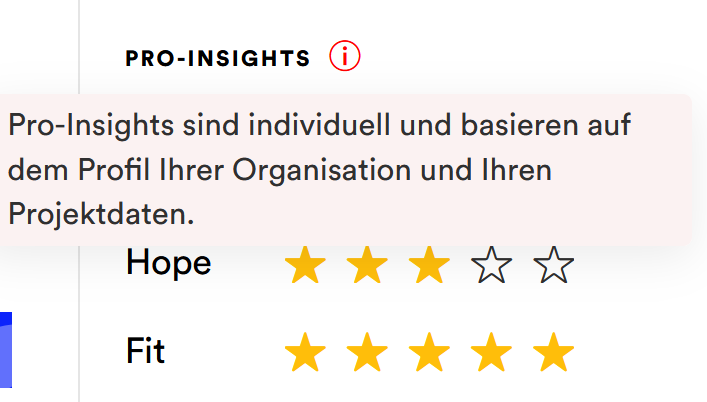
This makes it clear where an in-depth assessment is particularly worthwhile – and both funding organizations and nonprofits can use their energy in a more targeted manner. Important: Fit & Hope does not replace a thorough individual assessment, but offers valuable initial guidance.
A complete profile as a basis
For Fit & Hope to work reliably, it needs a solid foundation. The ratings are directly linked to the information in the profiles:
– Nonprofits need an organizational profile that can be supplemented by one or more project profiles. Important: A convincing and up-to-date profile is not only worthwhile for Fit & Hope, but also as a digital business card.
– Grant-making foundations also use their organizational profile as the basis for matching. The purpose of the foundation from the commercial register, which Spheriq updates automatically, is usually not sufficient for this; current priorities and exclusion criteria are crucial information.
In other words, the more precise and up-to-date the information on topics, target groups and regions is, the more accurate the fit assessment will be. Incomplete information – for example, if no target group has been selected – automatically leads to lower results or no results at all.
Fit & Hope cannot be used by users who use the platform as individuals. This is because the ratings relate exclusively to organizations and projects, not to individual profiles. For example, if you are active as a fundraiser for different organizations, you should work towards opening an individual profile for each of them. From the Pro level upwards, it is also possible to belong to several accounts at the same time and switch between them with one click.
The logic behind the two ratings is simple: Fit forms the basis, Hope builds on it.
– If Fit is low, Hope cannot be high either.
– Only when the thematic and geographical conditions are right can experience and feedback positively complement the picture.
The interaction is best explained using examples:
– A project in Zurich that is aimed at young people and is sought by a funding foundation with precisely this regional and thematic focus receives a high fit.
– If the same organization also has positive feedback, recommendations and shows activity and commitment through regular profile maintenance, Hope also increases – the chances of a successful partnership are correspondingly high.
It is important to note that all data is processed in compliance with data protection regulations. Only information that has been approved by the organizations themselves or confirmed by the community is included in the ratings.
How is Fit calculated?
The fit rating ranges from 0 to 5 stars and is based on three key factors: topic, geography and target groups. The decisive factor is whether there is an exact match or at least an overlap between two profiles.
– 5 stars (perfect fit): Topic, region and target group match as far as possible. Example: A foundation promotes projects in the field of environmental protection in Switzerland with children as the target group. A project that offers nature experiences for children in Zurich achieves the maximum fit here.
– 4 stars (good fit): Topic and region partially overlap. Example: A foundation is active throughout Switzerland, the project focuses on the canton of Basel-Stadt.
– 3 stars (acceptable fit): There is an overlap in only one central criterion (topic, target group or region).
– 2 stars (weak fit): There is no thematic match, only several overlaps in target groups or regions.
– 1 star (very weak fit): Only a single overlap is present, otherwise there are no similarities.
– 0 stars (no fit): There is no overlap whatsoever.
These gradations help to better classify the multitude of possible combinations and to recognize at first glance where it is worth reading a profile in depth.
How is Hope calculated?
While Fit is determined purely by content, Hope incorporates the history of the organizations’ experience.
The factors are:
– Feedback and recommendations: Positive feedback from other organizations increases Hope, negative feedback – for example, when mail does not arrive because the address is not listed correctly in the commercial register – reduces it.
– Activity: If an organization regularly updates its profile and has logged in in the last few months, Hope increases.
– Sound empirical values: Multiple confirmations that a foundation has actually supported projects or that an organization has worked successfully with partners further strengthen Hope.
Example:
– A foundation with a good fit has an actively maintained profile and has been rated positively by several organizations. It therefore also achieves a high rating from Hope.
– A funding organization that fits thematically but is not known to provide any funding or has no recommendation falls behind accordingly.
If you have a good fit, specifying the Hope helps you to use your own resources in a more targeted way.
Data protection, fairness and confidentiality
A central aspect of Fit & Hope is the careful handling of data. Personal information about individuals is not included in the ratings. Only the following are taken into account:
– publicly visible information in the organizational and project profiles,
– verified feedback and recommendations,
– objectively verifiable activity data (e.g. last login or last profile update).
This ensures that the assessments are transparent, fair and compliant with data protection regulations. The aim is to provide guidance – not to stigmatize individual players.
To prevent misuse, it is also mandatory to authenticate yourself in advance for every feedback and recommendation. This can be done in just a few clicks with our authentication partner Veriff.
All feedback submitted on Spheriq is treated confidentially. Although the users who write feedback are clearly identified, the feedback itself is stored anonymously. This preserves the integrity of the information, while at the same time ensuring that no one has to worry about being personally identifiable through their feedback. Confidentiality is therefore guaranteed at all times.
Simply more effective
Fit & Hope makes matching in the non-profit sector easier, faster and more meaningful. Nonprofits can immediately see which funding organizations might be worth applying to, and funding foundations can see which projects fit their funding profile particularly well.
The ratings help to structure the wealth of information in the list of actors, but are no substitute for careful individual examination. Every partnership remains unique. Fit & Hope is simply intended to make it easier to get there.
The system is constantly being developed further: The more organizations maintain their profiles and provide feedback, the more precise the information becomes. This will gradually create an even more reliable picture of the funding landscape – and increase the chances of successful collaborations for everyone involved.



